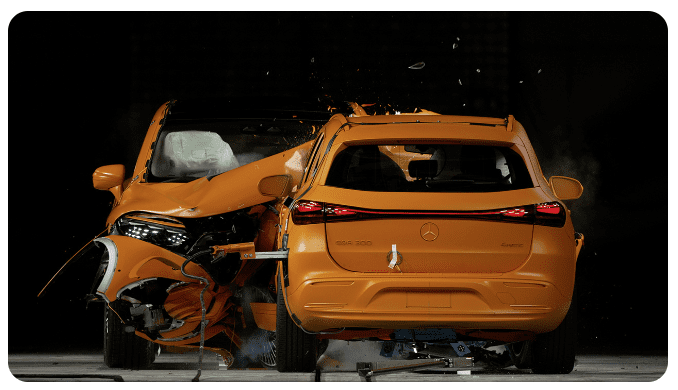Mercedes tests two electric cars in a frontal collision to prove how safe its electric cars are
Mercedes-Benz has become the first company to conduct a direct frontal collision test for two electric cars to ensure what might happen if they collide.

Mercedes tests two electric cars in a frontal collision to prove how safe its electric cars are - image source: almuraba.net
This test aims to demonstrate the safety of electric vehicles in severe accidents and review the integrated emergency systems within the vehicle to protect passengers and the battery during a collision.
The most well-known global crash tests involve moving a single car towards a fixed barrier to assess the extent of damage the car and its occupants would experience.
In Europe, these tests involve moving a car at a constant speed of 50 km/h towards a fixed barrier to verify the effectiveness of the car’s structural protection and airbags.
Mercedes-Benz explains that they conducted this test in this manner to simulate accidents on rural roads, particularly when a vehicle tries to overtake another.
They set the speed at 56 km/h because it is assumed that both cars are likely to brake before the collision occurs.
Mercedes deliberately increased the speed of the cars beyond the legal limit for this test to ensure the car’s structural protection for passengers.
While the significant damage to the front of the cars might be concerning for some, Mercedes’ engineers found that the vehicles were capable of absorbing the impact as required and diverting it away from the passenger compartment.
Mercedes also notes that despite the worrisome front-end damage, the doors can be opened in similar emergency situations, which helps passengers exit the vehicle on their own or with assistance from rescuers without facing difficulties in opening the car doors.
In addition to this, Mercedes ensures the effectiveness of the electrical system separation specific to the battery pack, using advanced systems to shut down all electrical systems when a serious collision is detected, ensuring the safety of the vehicle and its passengers before, during, and after the accident.

